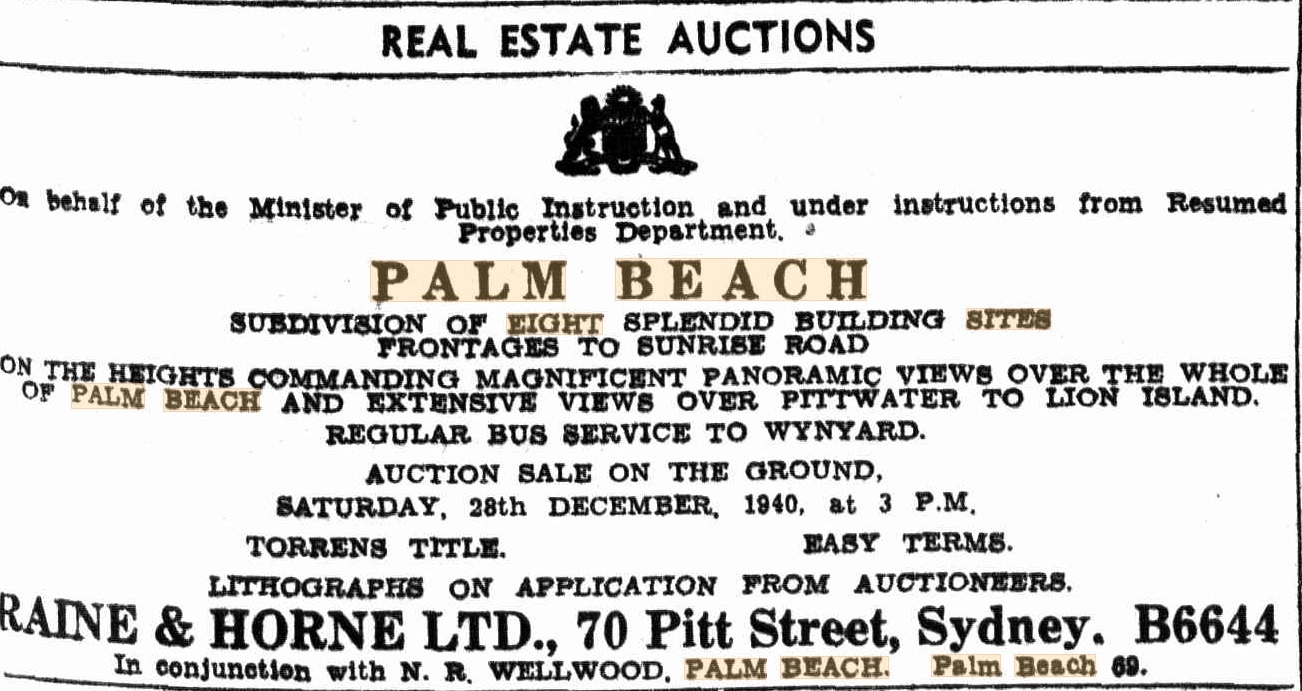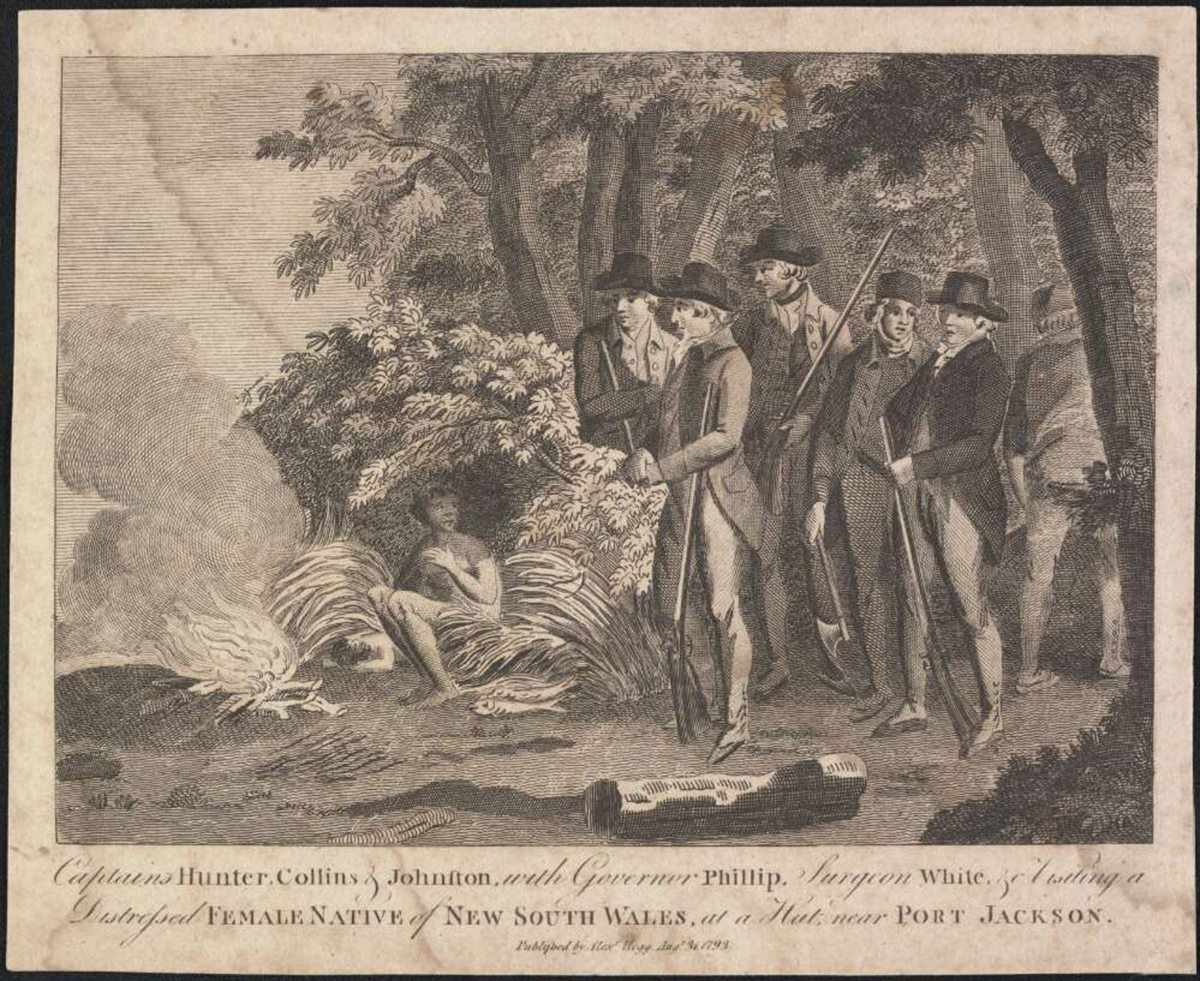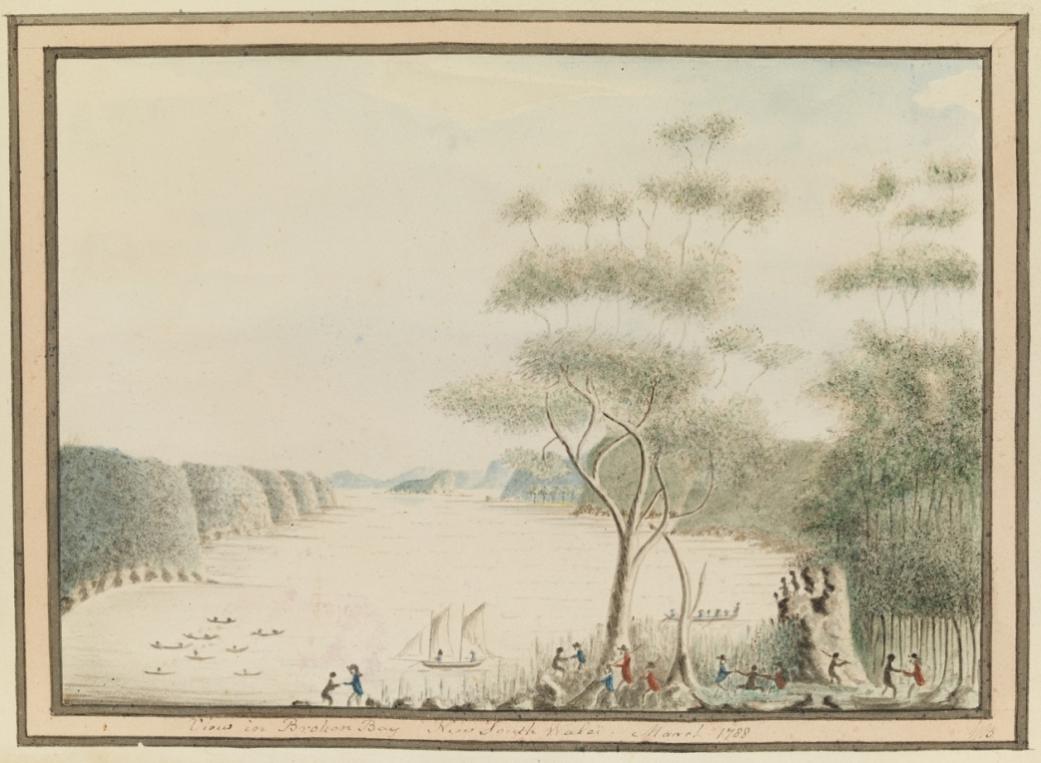Kookoomgiligai
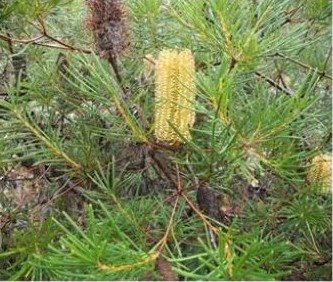
Finding meaning in words from the Garigal and Awabakal people, particularly the Wannungini peoples of the Central Coast, Haweksbury and Pittwater has proved difficult. To define the essence of Sunrise Hill, and trace the paths of the women who must have walked and lived there a hundred years before any beach cottage was built, has entailed finding and defining what remnants remain. 'Barrenjoey', for instance, also spelled in earlier records as Barranjoey, Barrangui and Barrenjuee, has a meaning of 'little kangaroo' and would refer to the wallabies that are still present in the national park opposite and throughout the bus reserves from there to Terrey Hills and Belrose and throughout Warriewood, Narrabeen.
The plants, the rocks, the seasons all have meanings for fishing, for harvesting bush foods, for singing stories in our First Nations traditions. Petroglyphs mark sacred places, the astrological cycles and what came in season. These were ceremony places - markers for what may be found or what comes in the cycles of the year - whales, places where wallaby and kangaroo live, just as markings on trees on ridgelines throughout our area signified food places, food trees.
Fish came in due season; the flowering of the Sydney Wattles were a sign that mullet had returned. Christmas always brought the blackfish. Emu and wallaby were also once in abundance. Whales, to saltwater peoples, came to short and beached themselves to provide food for the tribes.
There were plants for eating, plants for medicine and some were for spirituality. Large rocks symbolise sleeping or ;’set’ dreamtime beings. Hills were and are totemic sacred ‘bora’ places.
“Most of the sites sit on hilltops surrounded by spectacular views to the bush and ocean in the distance. Others are surrounded by vegetation and are to be searched for.” (Veronesi. F. 2008).
In 1836 Boin, Bowen or Bohun, eldest son of Bungaree by his wife Toura, moved his family to what was for them the western beach of Barrenjoey (Barrangui; wallaby or little kangaroo). They lived near the old customs house. With him came his wife Maria, or Maryn, his daughters Theela and Theda (Jane) and son Mark. Jonza and Nan or Naney, Maria’s parents, came too.
Bowen worked as a tracker, finding smugglers, sly grog distillers and bushrangers in the creeks and bays of Pittwater. His daughters and the elder women would have fished and gathered seasonal natural crops.
At puberty girls were married and went to live with their husband. Their mothers and elders prepared them for marriage with knowledge about their sexuality and bodies. Rituals included ceremonial bathing, separation from the tribe for varying periods of time and food taboos.
Due to a lack of records people can only speculate on the visits of the Bungaree women to Sunrise Hill but as Dreaming Tracks or Songlines stemmed from Barrenjoey to Manly, and the original Pittwater road built by settlers here was along these tracks, it is certain they went there. The plants that dominate the landscape still are women’s spirituality plants such as the Banksia (of spirituality) and the she oak (of fertility and pregnancy, womb and ovaries etc.).These hills of Palm Beach were also once prolific with Waratahs - another 'female' plant and flower in our First Nations peoples knowledge. These, and the wattles and grevilleas also found in the remnant of bush on this hill, were a timetable to signify what place in each season had arrived and what could be harvested. The hill’s round shape also suggests mother lore and women’s wisdom.
To celebrate Maria, Theda, Nan, and Theely, and all aboriginal women, our third lady of Sunrise Hill is the hill itself and the ancient peoples who once sang, danced and ate here. Images from that place and its current flowerings are our tribute to their still present voices. Just standing in this kept bush reserve you can feel this is a female place and even sense their presence still.
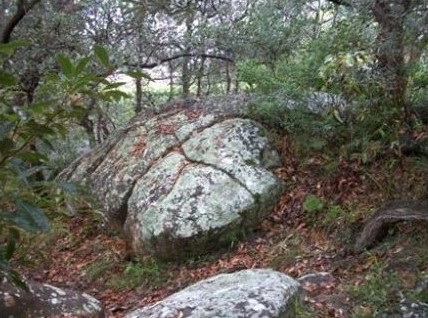
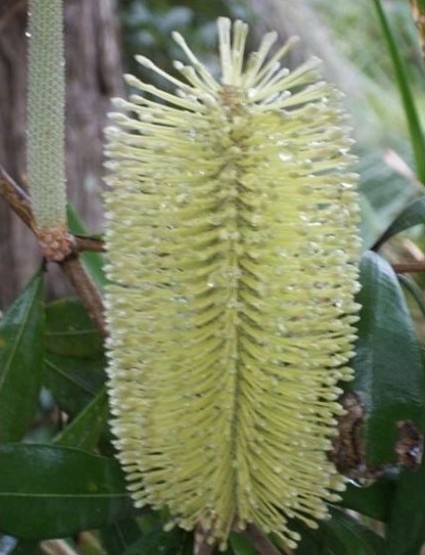
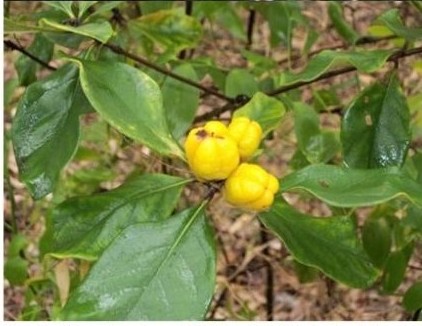
Photos taken in the Reserve atop Sunrise hill in 2011
Some descriptions of the journey to Pittwater from some of those who traversed this way over those earliest decades:
JOURNAL OF AN EXCURSION TO BRISBANE WATER.
Sunday 8 o'clock A. M. started from the King's Wharf in a waterman's boat, for Manly Beach, the head of the North Harbour of Port Jackson, servant carrying two or three small bundles, containing cold ham and tongue, bread and cheese, a couple of bottles of Cognac, with change of linen, &c. landed and began our march, with coats across our arms, for the South Head of Broken Bay through the bush. After rather a difficult path of two miles we found by the roar of the surf that we were near the coast; when the trees getting thinner, all of a sudden we found ourselves on a fine sandy beach, called Cabbage Tree Beach, with a lagoon at the north end of it, running out with great rapidity into the sea. Here we were obliged to take off our shoes and stockings and walk across the water up a little higher than our knees.
The head land jutting out too far into the sea, we were compelled to climb over the top, 300 feet high; but the view of Port Jackson and its hundred coves, its bold and fearful heads, with the coast to the north, and all the successive beaches and promontories we had to pass, amply repaid the trouble of the ascent. We soon got in sight of Long Reef, seven miles, which appeared on inspection, to be a very superior farm; considering its sandy situation, and standing very happily with a commanding sea view, both north and south. It is the property of a person of the name of Jenkins, whose improvements, plenty, and hospitality, evinced him a farmer of some substance. It was nearly one o'clock at noon, and rather singular to our Sydney notions to be asked if we would have a cup of tea; we preferred a good English cheese and a glass of brandy and water, and after resting ourselves, resumed our journey, which lay through the Narroby Lagoon, almost beautiful spot, and more resembling the lakes of Keswick and Ambleside, than any thing we had seen in the Colony. There having been no rain for three months, and a very low tide at the time, there was no occasion to take off more than our shoes and stockings, and we walked a quarter of a mile through the water, not deeper than our knees, over a fine sand that felt so velvety to our naked feet that we almost regretted it was not broader.
Another head land, as usual, succeeded to this sand, and after ascending it we turned to our left through the bush and arrived at the head of Pitt Water and regaled ourselves at the farm of one Geary. Here, a Sydney boat was at anchor, and very fortunately for us, had no objection to accept 15s, for putting us across to Brisbane Water. This is not the usual place for crossing the Bay, but seven miles lower down, at the mouth of Pitt Water, at a projecting rock called Barren Joey; but we preferred the boat and the smooth placid inlet, at sunset to the rocky, unpleasant journey by land.
Pitt Water is an old settlement, although having very scanty signs of cultivation. The few spots about it cleared are mostly for the rearing of onions, which, on account of the rich accumulation of sea shell, the soil is enabled to produce in great perfection. On our arrival at the fisherman's hut, the usual place for ferrying passengers across Broken Bay, the moon had just risen and there was agreeable but uncertain light over the broad expanse of water — the lofty craig of Mount Elliott — the entrance of the River Hawkesbury and the numerous headlands about the bay, which caused Capt. Cook to give it its name of Broken. It was well we were provided with a boat, for the fisherman had none, which much excited our surprise ;and in a passage of so much importance — so much danger in bad weather — and such increasing traffic as Broken Bay, the government, we hope, will not be long in establishing a competent and safe conveyance across this stormy estuary.
From the South Head to the North is 18 miles, almost as wide as the entrance of the Mediterranean, between Gibraltar and Ceuta, and yet travellers are left to find their way across in little cockle shells of boats, when the fishermen think proper, and at a rate of more than one shilling per mile each passenger. The inconveniencies in winter must sometimes be serious, for instead of finding a decent or convenient ferry-house, it is; hardly credible that human beings can exist in such perpetual filth and darkness, as in the fisherman's hut at Broken Bay. Those who have crossed the Pentland Frith, and had the happy luck of being weather bound a week or ten days, at the Ferryhouse at Honna, might be able to make a comparison; but the house at Honna, is a Shropshire dairy by the side of this beastly abode. Cockroaches in thousands, were marching and counter marching on the rushy sides of the dwelling, and our persons in a few minutes were, literally covered with them. Fleas, bugs, and mosquitoes were only less annoying because they were less numerous. In vain did we wish for the flood tide to enable us to cross the bay, we were obliged to light cigar after cigar and walkabout outside the hut, and at last wrap ourselves up in a dirty, old sail, and try to go to sleep under the thwarts of our boat as she lay at anchor near the shore— but it was nearly impossible — the mosquitoes followed us, and some of the other vermin accompanied us, and what with their buzzing and biting, and the hardness, dirt, and wetness of our bed, it was merely closing our eyes and nothing else. At last the tide turned and the moon waned, it was 2 o'clock in the morning there was a fresh chilliness in the air— we lit another cigar; pulled up the stone and rowed away from this abominable hole.
The old fisherman had just lost his black gin, who it appeared, had been his housekeeper for many months and had completely left her black associates for his company and hut. I blushed to think that any man, bearing the name of Englishman, should form a cool, deliberate connexion with a female savage, who must have been unlike her race, if she had ever washed herself, if she was not eaten up with vermin, legs ulcerated, and blotches on her head, and in manners and habits every thing that is base and disgraceful. Oh Mrs. Fry, I exclaimed, this would not have been the case but for your system of recommending female convicts to be kept at Millbank, instead of sending them to New South Wales. But for your unnatural folly, this old man would have been most likely a happy, cleanly and creditable husband, with every thing around him comfortable and tidy, and half a dozen chubby children to make this stage in the journey pleasant and interesting. As it was, no doubt the black woman was getting more civilized, but the white man was approaching the savage state of indolence and filth. But enough— there was a great swell across the bay, much more than I liked, for our little boat, though the two men pulling, agreed that they had never seen the bay so smooth — this was annoying, but never mind. Mount Elliot seemed to recede from us the more we pulled— so, large an object, it was seen through the obscure starlight as if close to the boat, and yet we were pulling more than an hour before it was abreast of us. The tide now favoured us, and, the rapid rush near the sand rollers of Brisbane Water became louder and louder, and passing Lobster Beach, we regretted the indistinct twilight did not allow us to make out more than the beautiful outline of its surrounding hills. The morning of Monday here broke upon us, and the first sight and impression made by this enchanting spot will never, be forgotten. God has done every thing for you, oh, beautiful Lake Brisbane! Man nothing! Nature here still assumes her sway; and if we may judge from the stupendous size of her innumerable trees, years will revolve before she can be much disturbed. Twenty clearing gangs, in twenty years, might make some difference, but the forest appearing at present as everlasting as the hills, they almost mock the individual, whose feeble axe on their giant sides is like the tickling of a lady's fan. The day no doubt must come, when wealth and luxury shall have converted this elegant sheet of water into another Geneva or Maggiore, but who of this generation can hope to live to see it....
ON THE LAND.
WILD FLOWERS.
(BY W. M. SHERRIE.)
The wonderful wild flower country which is within easy reach of the city of Sydney, and especially north and south in the region of the coast, is being slowly but surely devastated. At the present rate of destruction thousands of acres of land, which, in point of richness and variety of flora, constitutes one of the greatest of the landscape glories of Australia, will be entirely denuded of its Interest and beauty. The multitudes of picnickers and week-enders go further and further afield with the extension of the tramways and other means of travel, and they mutilate and destroy on a wholesale scale. There is no reason why people should not have wild flowers; but there is every reason why they should be prevented from gathering them in a manner which means widespread extirpation.
Beyond Manly-indeed, all over that lovely region embracing Barranjoey, Palm Beach, Píttwater, Kur-ring-gai Chase-wild flowers grow in abundance and in great variety. Waratahs, flannel flowers, Christmas bells, and scores of other blooms flourish through many months of the year, but everywhere they are being gradually reduced, if not wholly destroyed. About Dee Why, Narrabeen, Brookvale, French’s Forest, and thereabouts, as well as on the South Coast, the same process of devastation goes on year after year with cumulative effect, and no attempt appears to have been made to restrain though desolating hands of the raiders. If only people picked flowers for the love of them, or confined themselves to taking reasonable quantities, there would be no objection to them taking-toll of the riot of floral beauty so generously provided by nature. The majority of people waste and destroy far more flowers than they use. A common practice is to tear whole plants up by the root. If they would only cut or break off the stalks and leave the root in the ground the plants would continue to grow and to bear blooms. As it is they are killed outright.
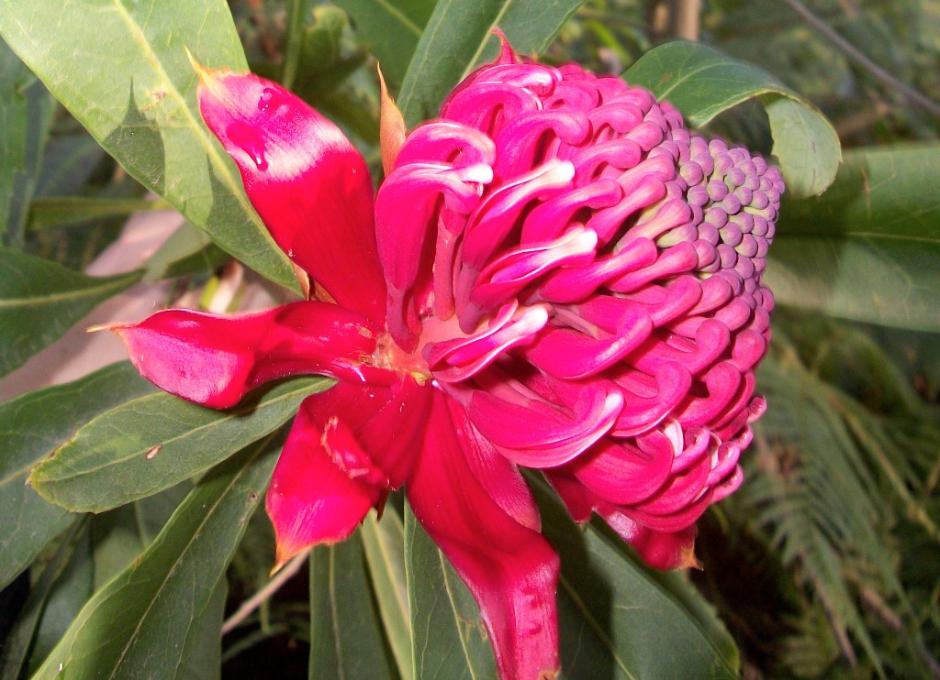
Australia's national flower, the gorgeous Waratah is not torn up by the root, simply because nature has given it a means of protection against that sort of ruthlessness. But the bushes are seriously mutilated. About Palm Beach one sees many waratahs which bear no flowers, and probably will never do so again. Apparently this sterility is due to the violent treatment they have received by thoughtless or wanton visitors.
People cross over to Kur-ring-gai Chase and come back with as many waratahs as they can carry. Hundreds of these blooms are wasted. People greedily possess themselves of far more than they have any use for, and, becoming tired of their loads, leave them lying on the ground. Following in the wake of a holiday crowd one sees torn and mangled plants and blooms of every description. People who behave in this way cannot really claim to be considered lovers of either nature or of beauty in any form. Numbers of them pick lovely flowers only to throw them away, in much the same spirit which animates a young child having no knowledge of right or wrong. For the most part private lands and public reserves are raided without discrimination or respect for the rights of the individual or the community. The wild flowers of the coastal districts about Sydney are an everlasting source of charm and delight to tens of thousands of people. They are also a source of health and physical pleasure, since they serve the useful purpose of attracting denizens of the metropolis into the bush to spend their holidays and their week-ends. Thus wild flowers minister to the material as well as the romantic needs of the people, and as the collective property of the community they should be afforded some measure of protection.
The wonderfully and aptly named 'Waratah' street of Palm Beach, and the still green Sunrise Hill above it, as well as the long ridge line above Pacific indicate where these red crowns were once rising in abundance.
Kookoomgiligai is actually the name given to a home at 42 Sunrise road, Heritage listed by Warringah Shire Council - a listing which persisted with Pittwater Council. It is a name that could easily be applied to this reserve itself. Kookoomgiligai: Gai; also means ‘woman’ in Garigal, Gilgai; from New England region has meaning of ‘waterhole’, and where this page dedicated to these first women in this 'women's' place stems from.
This park was dedicated for a Public School by the Barrenjoey Land Company in their first subdivisions, from 1921 on, and persisted as such, even when the Lots of land bought by Dr. Brown Craig were sold in 1940.
In 1915 Mary Brown Craig (wife of Francis Brown Craig - youngest son)acquired three blocks on Sunrise Hill (No.s 161, 162, 163) where
Craigie-Lee was built.
Craigie-Lee was apparently the oldest house in Palm Beach in original condition until a 2002 renovation which maintained the original ideas and was the winner of the 2002 R.A.I.A Greenway Award for Conservation for Rob Brown and Caroline Casey (Casey Brown architecture)
.
Mary was the daughter of J. H. Maiden, the gentleman in charge of the Sydney Botanic Gardens for 40 years. They married in 1911 and had two sons, Robert Francis brown Craig (born 1912) and Henry Brown (born 1914) and three daughters; Elizabeth (born 1916), Lucy (born 1921) and Anne Brown Craig (born 1921) after he returned from serving during WWI as a medical officer.
They built Cragie Lee on Sunrise road. The home is an "Arts and Crafts Timber Bush Bungalow" designed by James Peddle in 1916. James Peddle co-authored landmark legislation known as the Local Government Building Act in the early 1920's, which governed the erection of buildings in New South Wales. From 1906, Peddle began offering Sydney clients a broader capability. He branched into the planning and supervision of more major public buildings and his work in this period of development included Sydney’s Royal Agricultural Showground buildings, schools for the Kindergarten Union and commercial offices at St Peters.
The original plan form consisted of a modest 2 bedroom cottage built around 1916 with a central lounge/living space with a massive stone fireplace, a pantry/kitchen area, two small bedrooms and a bathroom. A cross hall noted as lobby on the original plans, contained a long row of built in cupboards. The eastern frontage contained a broad curved sleepout veranda with smaller side return on the north. The original design incorporated a large sleepout area rather than number of enclosed bedrooms. Craigie Lee's foundations are of rubble stone supporting a top level of timber stained dark brown with an open verandah. Posts of natural undressed tree trunks support the verandah roof. (Palm Beach, "Craigie Lee" (house), 35-37 Sunrise Road, Lot 1, DP 1024404 - Heritage listed with Pittwater Council). During a 1936 bushfire the verandah was apparently burnt and would have been replaced.
Craigie Lee as a name comes from creagach 'rocky place' from Scottish Gaelic; from the word "crag" and Lee from leas 'fields - green open place' also component of 'ray of light' as component of a girl's name.
Barrenjoey Palm Beach Estate, Pittwater - 2nd subdivision - December 1912, the yellowed in lots are sold already. Item: c053460057, courtesy State Library of NSW - showing proposed school site lots set aside
Palm Beach Estate - Ocean Rd, Northview Rd, Sunrise Rd, Floric052700043 - and sections from, courtesy NSW State Library Subdivisions folders: Palm Beach - shows Lots being sold by the Palm Beach Land company after R T Ralston had passed away and who already had homes/weekenders at Palm Beach and where these were - circa 1925-1929
.jpg?timestamp=1674420352118)
Unfortunately these lots ended up in the hands of the then Minister for Public Instruction, David Henry Drummond, who proceeded to sell the bulk of the land, leaving only two lots left in public hands.
David Henry Drummond (1890-1965), farmer and politician, was born on 11 February 1890 at Lewisham, Sydney, fourth son of Scottish parents Morris Cook Drummond (d.1896) stonemason, and his wife Catherine (d.1892), née McMillan.
He was active in the Farmers and Settlers' Association, and in 1919 became an organizer for the new Progressive Party, formed by the F.S.A. and the Grazier's Association of New South Wales. In the elections of 1920 he and (Sir) Michael Bruxner won seats in the Legislative Assembly. Drummond retained his place in 1922 and 1925, and on the return to single-member seats in 1927 he won Armidale, keeping it until 1949. In 1921 Drummond was one of the 'True Blues' who stood out against a coalition with (Sir) George Fuller, and later described themselves as the Country Party. He was on the Parliamentary Standing Committee on Public Works in 1922-25 and deputy chairman of committees from 1922 to 1927. From 1925 he was on the executive of the F.S.A. and was its president in 1927-28. He was a foundation executive-member of the Northern New State Movement.
Drummond was minister for education in the Bavin ministry in 1927-30, and again in the Stevens-Bruxner and Mair-Bruxner coalitions from 1932 to 1941.
The United Australia Party (UAP) was an Australian political party that was founded in 1931 and dissolved in 1945. The party won four federal elections in that time, usually governing in coalition with the Country Party. It provided two prime ministers: Joseph Lyons (1932–1939) and Robert Menzies (1939–1941).
Sir Bertram Sydney Barnsdale Stevens KCMG (2 January 1889 – 24 March 1973), also referred to as B. S. B. Stevens, was an Australian politician who served as the 25th Premier of New South Wales, in office from 1932 to 1939 as leader of the United Australia Party (UAP).
Alexander Mair (25 August 1889 – 3 August 1969) was an Australian politician who served as Premier of New South Wales from 5 August 1939 to 16 May 1941. Born in Melbourne, Mair worked in various businesses there before moving to Albury, New South Wales where he went on to be a member of the New South Wales Legislative Assembly for fourteen years. In 1932, Mair was elected to the seat of Albury and was re-elected a further four times. He rose quickly through the cabinet of Bertram Stevens' United Australia Party government, becoming an Assistant Minister in April 1938, Minister for Labour and Industry in June and Colonial Treasurer in October.
A staunch supporter of Stevens throughout his Premiership, Mair became his successor as Premier in August 1939 following Stevens' defeat in a no-confidence motion moved by renegade Minister, Eric Spooner.
The sales plan:
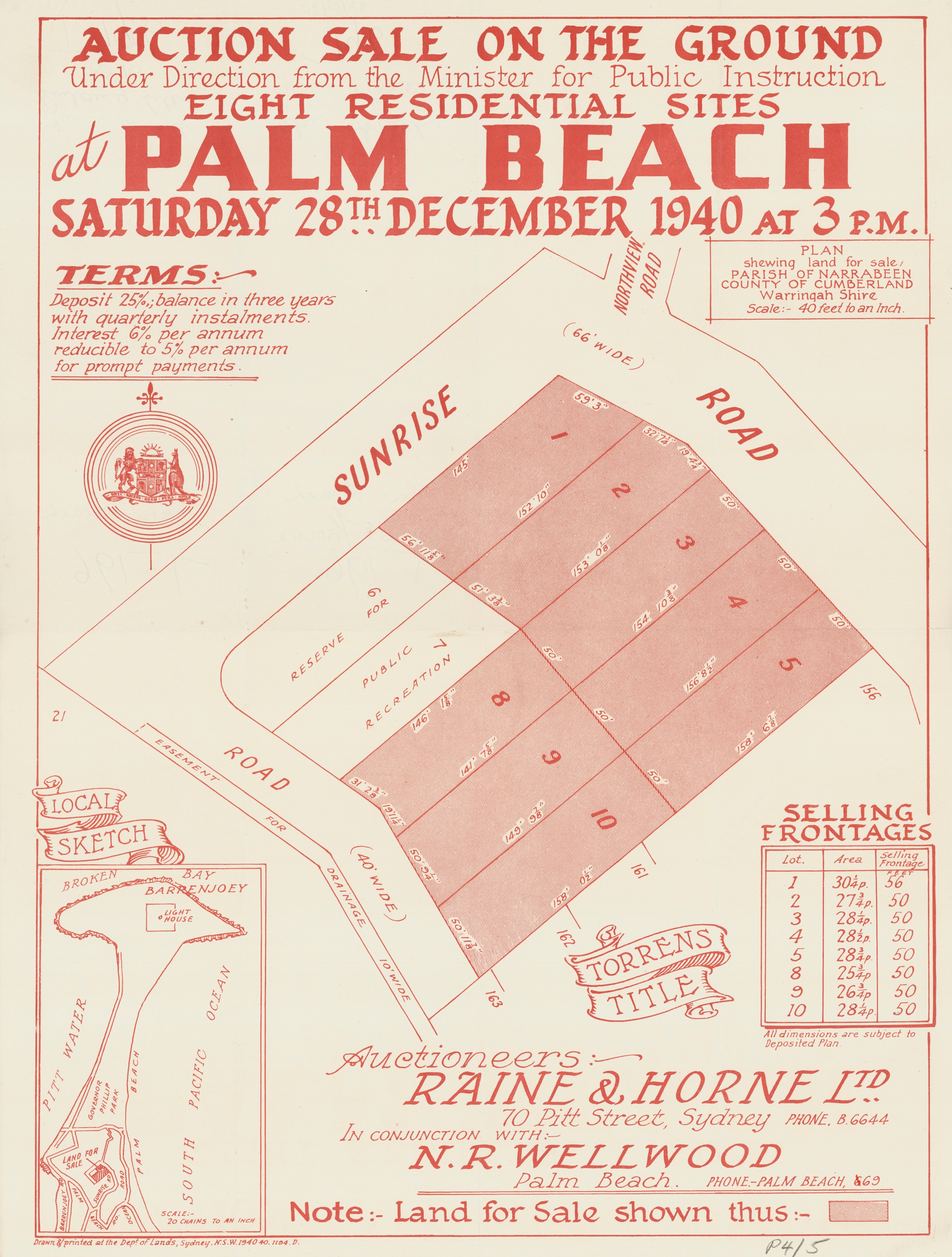
subdivision of 1940, Eight Residential Sites at Palm Beach, Sunrise Rd, Item: SLNSW_FL9048324, courtesy State Library of NSW Subdivisions Folder for Palm Beach
Advertising (1940, December 7). The Daily Telegraph (Sydney, NSW : 1931 - 1954), p. 11. Retrieved from http://nla.gov.au/nla.news-article248824953
The Sunrise road reserve and hill school site were dedicated to Warringah Shire Council, which had a policy and ethos from its outset to set aside places for people; along beachfronts, over hilltops as paths between places, and atop hills just as places to keep for contemplation, visitation and to keep the bush intact in its first form. Their minutes of meetings records:
4/10/1949, 19. Resolved, - That the Education Department be requested to dedicate the former School Site on Sunrise Road Palm Beach -as a public Reserves recreation area and vantage point. (Crs. McKay, Thomas)
And that is why we still have this have this original 'women's place' of what is today called sunrise Hill today, and why you can still hear their laughter and soft voices, if you pause to listen, in this special place atop Sunrise Hill.
This would have also been a place of healing then, much needed in the decades that followed the arrival of Europeans. During 1789 a major epidemic raged in Sydney. Journals from the year prior to suggest that it was either smallpox or chickenpox, probably smallpox, which was present in some of those coming into contact with our indigenous peoples. This was brought here from those first ships that landed - the impact on those who lived here was horrendous - even a flu or cold was enough to cause fatalities in peoples who had never been in contact with these before.
In William Bradley's Journal 'A Voyage to New South Wales - 1786-1792', he records his Exploration Of Broken Bay, Pitt Water and the Hawkesbury' of March 1789 and in May of 1789, near Manly and on the harbour;
9 May 1789
9th. Falling to leeward of the North Head we made a trip with success and at 3 passed between the Heads. At 6, anchored in Sydney Cove where we found the Supply.
We found that a native man had been taken by force by Lieutenant Ball, commander of the Supply, for the Governor, it not being possible to persuade any of them to come amongst us. He was for some time kept with an iron about his leg and, when on board the Supply going down the harbour, he jumped overboard, but was taken up and prevented from joining his countrymen and old companions who were near. He was so well reconciled to his situation when we arrived that he was allowed to walk about by himself. His irons were taken off.
[Page 162]
When an old man and his child were brought up to Sydney Cove with the small pox out on them, soon after this old man, another native man was found in the same situation, with a child laying by him, both of which were brought up to the hospital. The native at the Governor's (Arrabanoo) met them without fear of the disorder, by which it was then supposed that he was ignorant of that disorder, or that he had had it and was recovered. The two men died before we arrived, but the children were then on the recovery.
From the great number of dead natives found in every part of the harbour, it appears that the small pox had made dreadful havoc among them. We did not see a canoe or a native the whole way coming up the harbour and were told that scarce any had been seen lately except laying dead in and about their miserable habitations, whence it appears that they are deserted by their companions as soon as the disorder comes out on them, and those who are attacked with this disorder left to shift for themselves. We judge this from their having been found not buried, in every part of the harbour. Some have been found with a child laying dead close to them and some, who have apparently used their utmost exertions to get at water, having been found laying dead between a cave and a run of water.
And from later that same year:
[Page 165]
17 June 1789
Wednesday, 17th. The Governor and party returned from Broken Bay. In the branch running to the NW out of the SW arm they discovered that an opening round an island, which had not been examined before, led to a fresh water river up which they went about twenty miles from the island at the mouth of it, when they were obliged to return for want of provisions to enable them to proceed.
When they gave up their pursuit they had 6 fathomss water and made use of it both for drinking and cooking. They met with but few natives and found some that died of the small pox laying near the path between Port Jackson and Broken Bay.
In a Cove of the southern arm they met with a woman who had just recovered but was so reduced and weak that she could not accompany her companion who ran away on the boat coming in near where they were. This poor creature crawled in among the long grass to hide herself and was by chance found in that situation. After having received every relief that could be given her, she became familiar as her fears subsided, but was not to be found when the boats came away. By Captain Hunter's Observation, taken near the inner South Head of Broken Bay, it appears to be 15 miles to the northward of Port Jackson.
Adams, Michael. (
1793).
Captains Hunter, Collins & Johnston with Governor Phillip, Surgeon White &c. visiting a distressed female native of New South Wales at a hut near Port Jackson Retrieved from
http://nla.gov.au/nla.obj-135775134
Prior to his passing away, the
Hon. Jim Macken, a champion of our indigenous peoples who knew every marker, mark and stone of the Guringgai peoples left intact on the western shores of Pittwater, stated he could see these indigenous peoples had left the estuary and surrounds quickly. His research pointed to the whole tribe being wiped out by this disease - all of them gone - decimated or fled.
Further - references
Fraser, in 1892, came up with the name Kurringai to describe our peoples. Guri/Koori meaning ‘black man’ and ngai meaning ‘black woman’ or ‘belonging to’. Bring the words together and get ‘GuriNgai’. From http://www.guringai.com.au/text.html
Kookoomgiligai:
Gai; also means ‘woman’ in Garigal
Gilgai; from New England region has meaning of ‘waterhole’
Shaun Hooper, a Wiradjuri man and a leader of the project, explains, "All across Australia there's pathways that people could use to move about the country. As long as you knew the protocol and the proper ceremonies associated with each place you could use those pathways.” From: http://www.smh.com.au/articles/2003/09/26/1064083186183.html
Trees (particularly old growth forests), "Sacred sights" and earth grid (song line) nodes are places where higher amplitudes of energies exist, & can have good healing potential if wisely applied.
From: http://spiritsafaris.com/pdf/Creation_Journeys_ebook.pdf
Veronesi. F. 2008. Mapping Footprints Lost Geographies in Australian Landscapes. University of Sydney.
From; HERE
Guringai languages Teachers Resource: http://www.gibberagon-e.schools.nsw.edu.au/resources/Resources/ABStudies_TRB.pdf
ALTERATION of TITLE OF RESUMED PROPERTIES DEPARTMENT TO GOVERNMENT REAL ESTATE OFFICE.
IT is hereby notified that His Excellencny the Governor, with the advice of the Executive Council, has approved of the title of the Resumed Properties Department being altered to that of the Government Real Estate Office as from 1st January 1950
JAMES McGIRR, Colonial Treasurer The Treasury, New South Wales,
Sydney, 8th December, 1949. ALTERATION of TITLE OF RESUMED PROPERTIES DEPARTMENT TO GOVERNMENT REAL ESTATE OFFICE. (1949, December 9). Government Gazette of the State of New South Wales (Sydney, NSW : 1901 - 2001), p. 3669. Retrieved from http://nla.gov.au/nla.news-article225594328





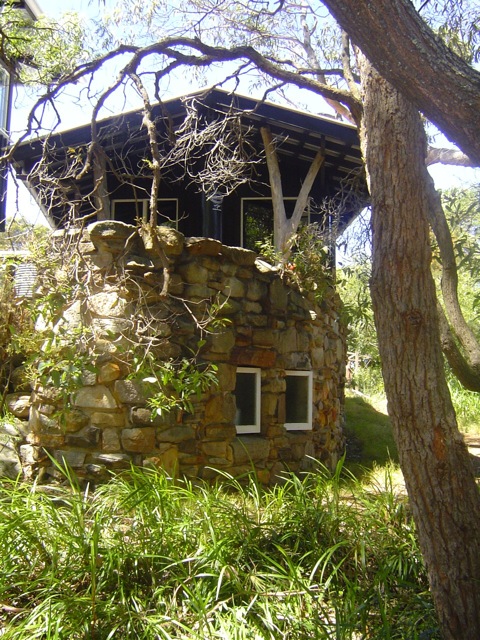
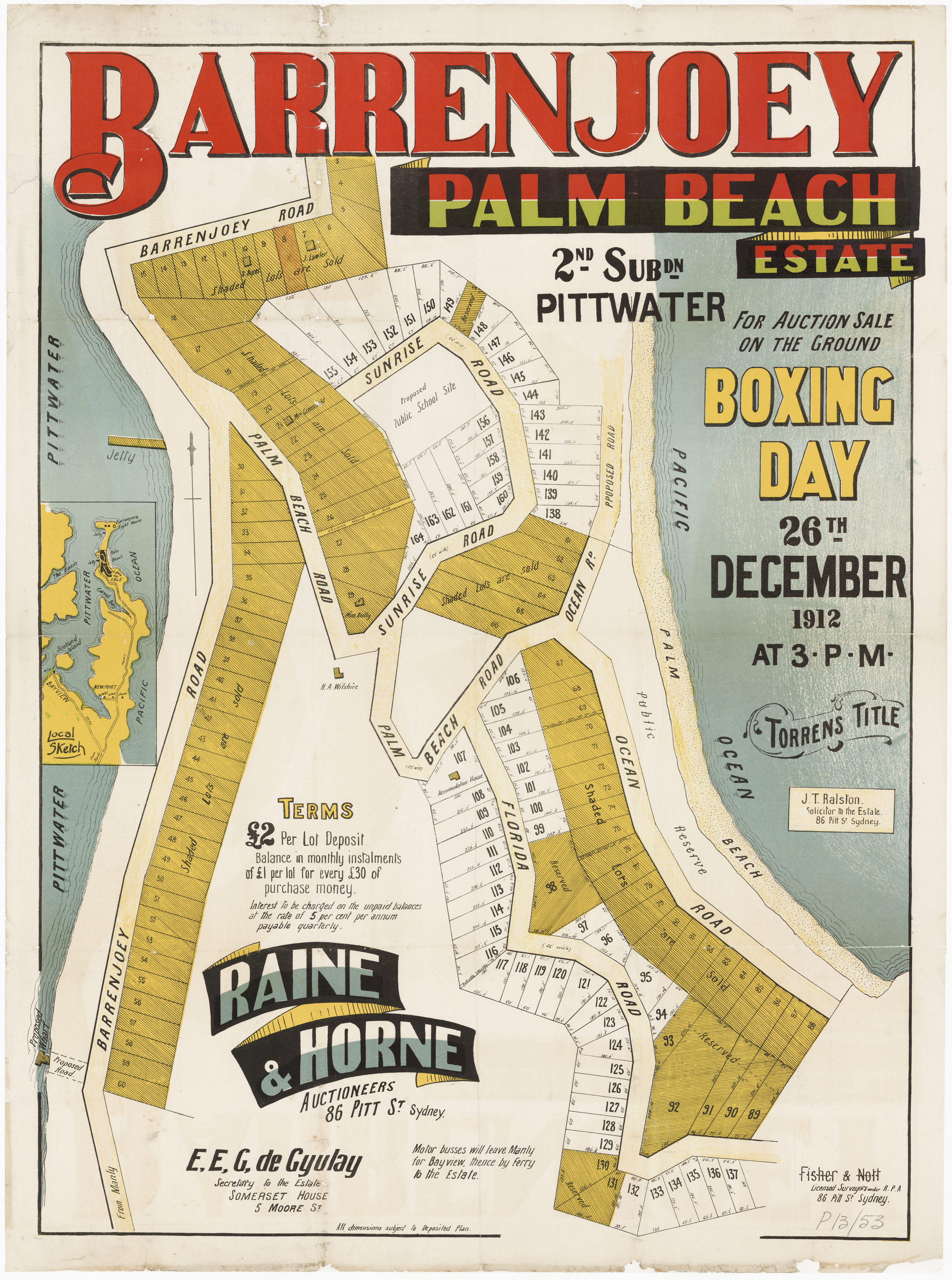
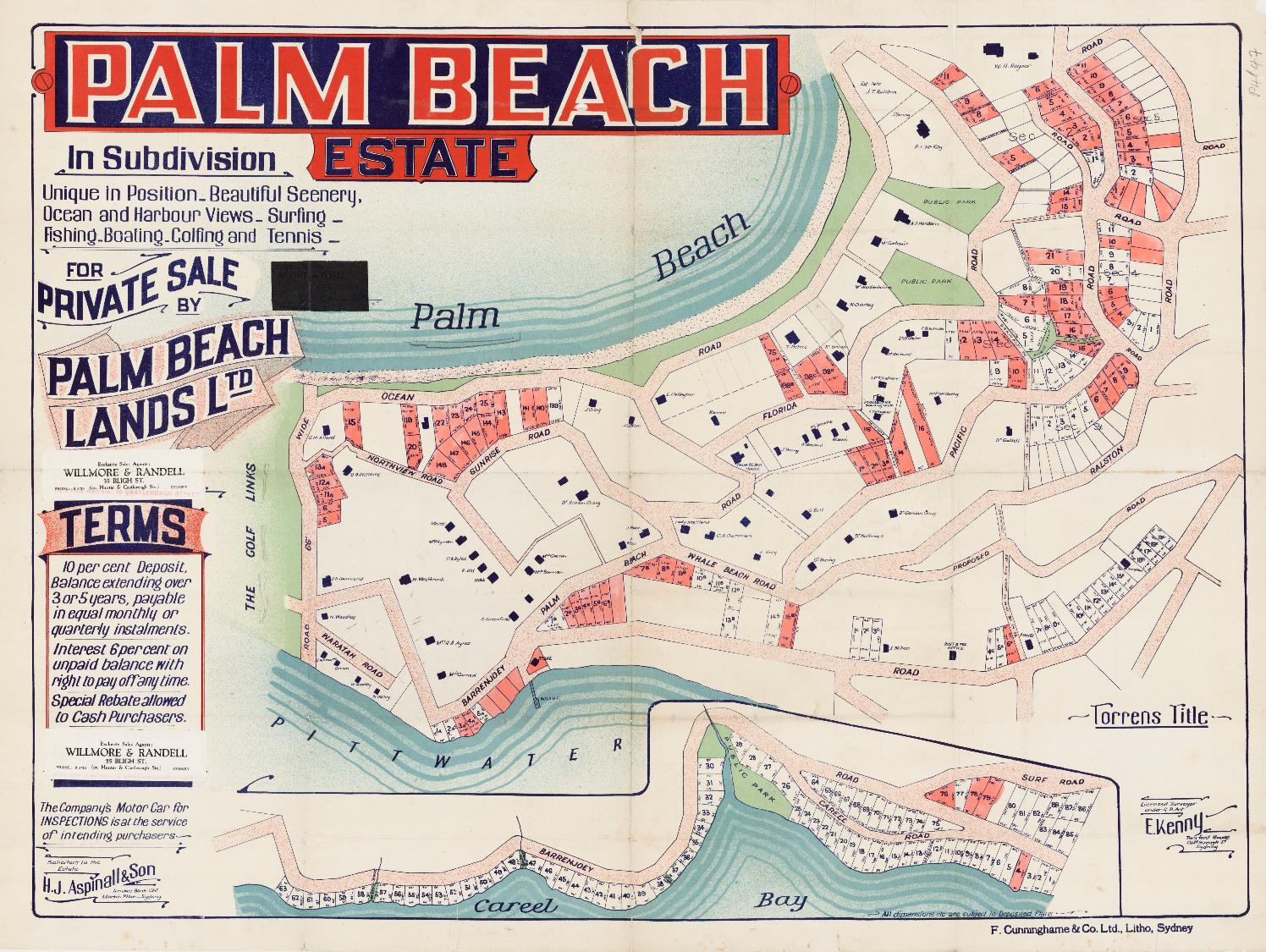
.jpg?timestamp=1674420352118)

